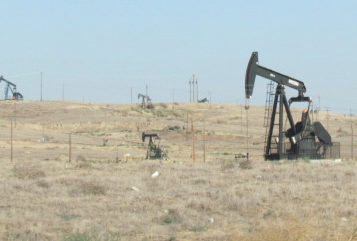
Last week, the California Air Resources Board (CARB) officially dubbed the state's cap-and-trade system “a success.”
Cap-and-trade, which began in January 2013, places a cap on emissions from industries in California, and then auctions off emission “credits” to companies that pollute, thus creating billions of dollars that can be invested in further greenhouse gases reductions. The data showing that cap-and-trade has cut climate pollution come from the state's Mandatory Greenhouse Gas Reporting Program, which requires the largest polluters to report their emissions every year.
Jonathan Camuzeaux and Tim O'Connor of the Environmental Defense Fund report that total climate pollution in the first compliance period—2013 and 2014—decreased over three percent. This puts California's emissions levels well under its 2014 cap, and puts the state well on its way to achieving the 2020 emissions levels target set by AB 32, the Global Warming Solutions Act of 2006.
At the same time, California's economy has prospered and employment has increased. Camuzeaux and O'Connor write:
California also experienced remarkable job growth during the same period. In 2013, California saw total employment increase by 2.1 percent, beating the national average. In 2014, job growth in the state reached an impressive 3.2 percent. As a comparison, the rest of the United States experienced only an average 2.2 percent growth in jobs that year.
The cap-and-trade system is a totally new idea, and whether it is workable or not is a question closely watched by the rest of the world. This early report shows that companies subject to the cap are figuring out how to comply with the rules, and incorporating them into their business practices.
But plenty of questions remain, including how truthful companies are in their reporting—a question not easily dismissed in view of the recent VW scandal. Another question is whether measuring, comparing, and reporting emissions on a per capita basis--something CARB and the legislature have chosen to do for a variety of good reasons—will let us off the hook in terms of the total emission reductions the state really needs.
But it's a really good start.
CARB's data [PDF] do not include all of the transportation sector, which came under the cap-and-trade system in January of 2015. Since transportation produces such a large portion of the state's greenhouse gas emissions-- almost forty percent—and fuel companies have resisted legislative efforts to control their emissions, next year's report should be interesting indeed.
For more information, see the EDF blog here.





